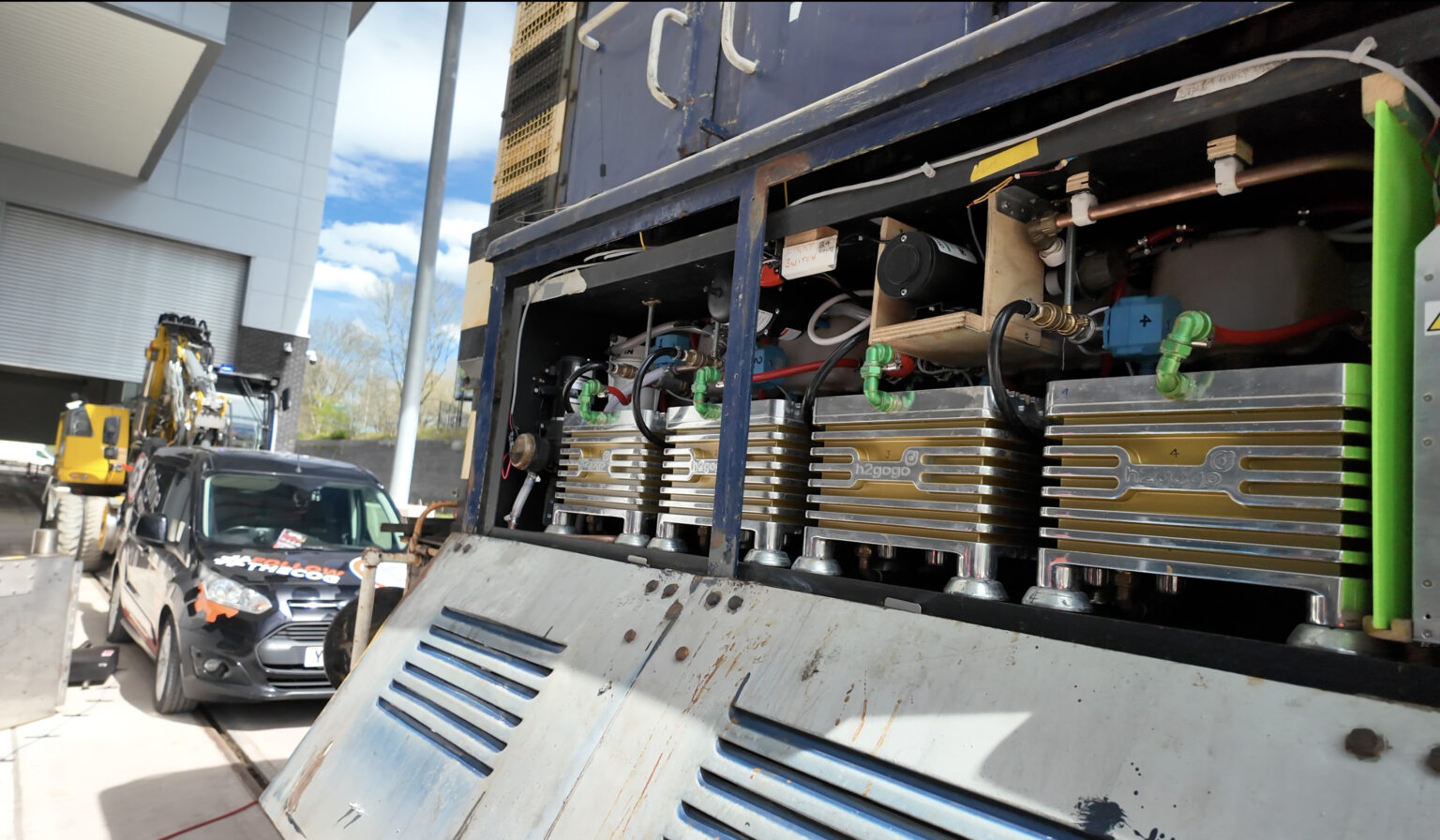An independent UK trial has reported promising results for Advanced Hydrogen Technologies (AHT) Group’s carbon clean and capture device, demonstrating significant emissions reductions and improved fuel efficiency in a Class 08 locomotive.
The study, conducted at the Very Light Rail National Innovation Centre in the West Midlands, showed a 22% reduction in overall exhaust gas emissions and a 20% decrease in heavy particulates, alongside an 8% increase in diesel efficiency.
The two-week testing involved a 1960s shunter from the Harry Needle Railroad Company (HNRC), utilizing AHT’s four-cell hydrogen generator and a bespoke capture device. The initial week focused on cleaning the locomotive’s engine by removing residual carbon build-up, particularly significant in older diesel engines. In the second week, the capture device further reduced harmful emissions and particulates.
Comparing AHT’s results with industry benchmarks, the 22% reduction in overall exhaust gas emissions and the 20% decrease in heavy particulates are noteworthy achievements. For instance, similar technologies in the automotive sector have reported emissions reductions in the range of 10-20%, placing AHT’s results at the higher end of the spectrum.
The 8% improvement in diesel efficiency aligns well with advancements seen in other hydrogen-based technologies. However, achieving consistent efficiency gains across different locomotive types and conditions will be crucial for widespread adoption.
AHT’s Engine Carbon Clean & Capture system’s modular design allows for adaptability across various locomotive sizes and types. This flexibility is essential for scaling the technology to meet diverse operational needs within the rail industry. The potential for mainline certification further enhances its market viability.
The reported fuel savings and emissions reductions present a compelling business case for adopting AHT’s technology. Lower maintenance costs, extended asset lifespans, and alignment with International Financial Reporting Standards (IFRS) ESG requirements add further value. However, the technology’s long-term performance and integration into existing systems remain to be fully validated.
